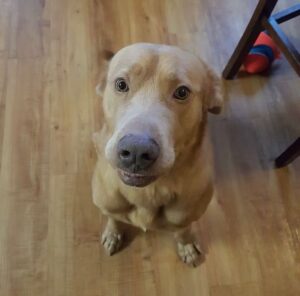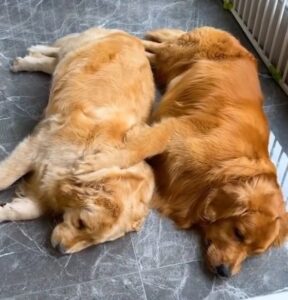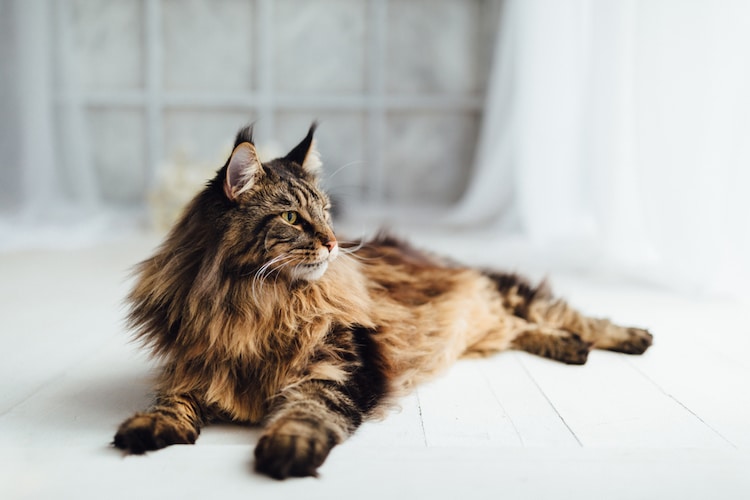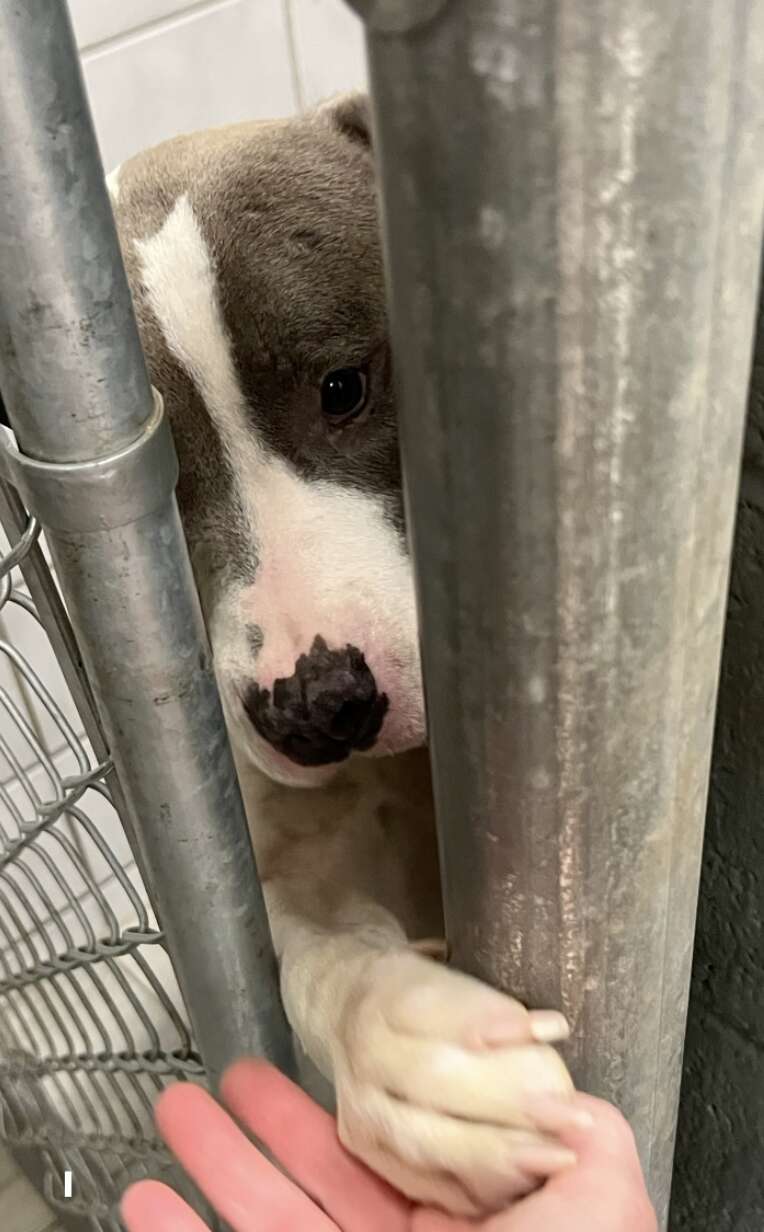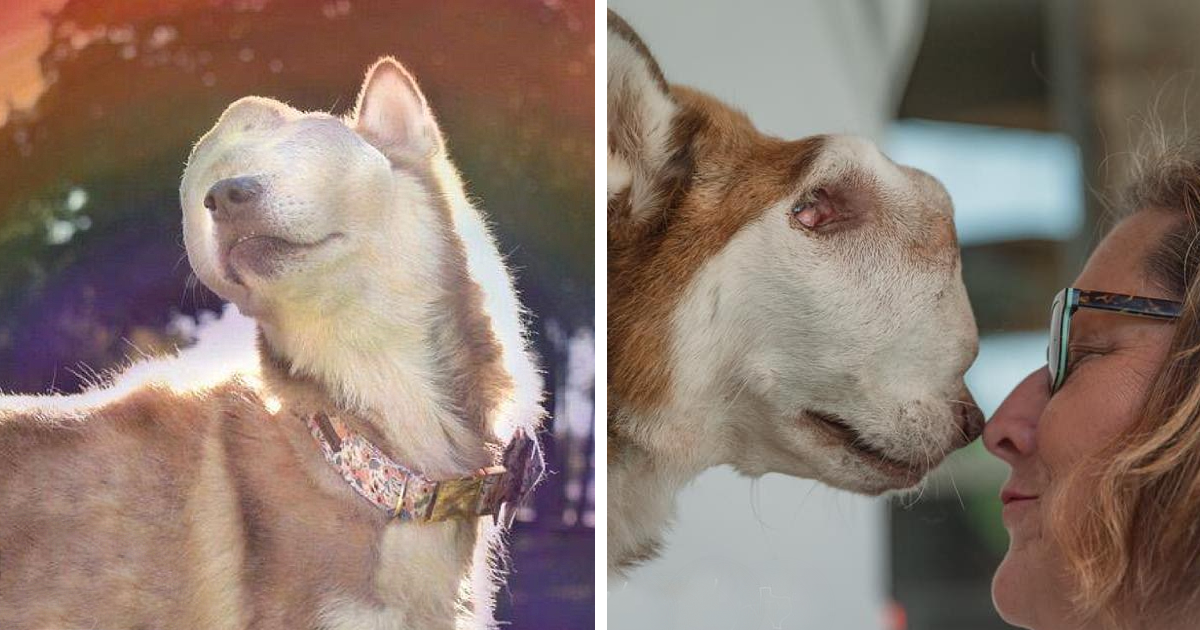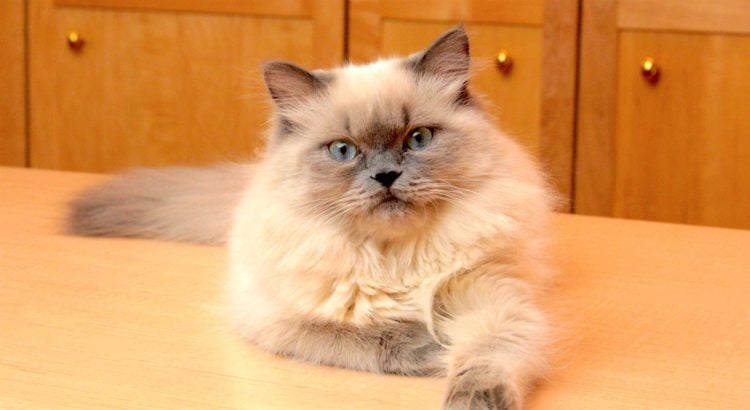
Himmie, short for Himalayan cat, is a fascinating breed resulting from crossbreeding between a Persian and a Siamese cat. These cats are sometimes humorously referred to as “Persian dressed up like Siamese,” since they possess the long hair of a Persian yet boast color points similar to those of a Siamese on their faces, ears, paws and tails. Himalayan cats have inherited the gentle and calm nature of Persians and the friendly, energetic demeanor of Siamese cats. They are admired for their striking blue eyes, adorable pug-like faces, and luxurious coats that flow like silk. The Himalayan cat has gained immense popularity among cat enthusiasts, owners, and even pop culture. In this article, we share 20 interesting facts about Himmies that you might not know.
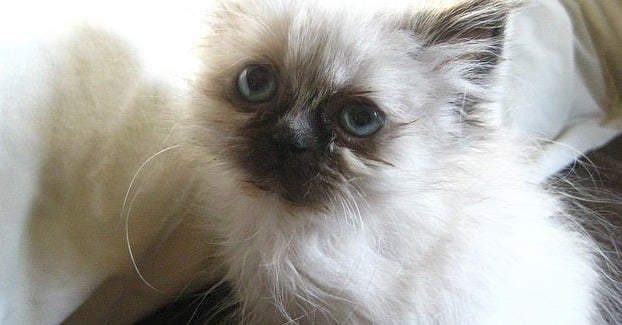
The fascinating history of the Himalayan cat is rooted in crossbreeding between Persian and Siamese cats. While many other feline breeds have been created through Siamese crossbreeding due to their alluring appearance and good nature, the Himalayan cat was brought about by genetic research. In the 1930s, a researcher named Dr. Clyde Keeler from Harvard Medical School conducted studies on the gene responsible for color pointing in cats. This refers to the unique coloring on the face, ears, paws, and tails seen in specific cats like Siamese. Working alongside cat breeder Virginia Cobb from Newton Cattery, Dr. Keeler began crossbreeding Persian cats with Siamese. After numerous attempts, they finally produced a kitten named Newton Debutante. This kitten had long, thick, white hair with color points, a flat face, and stunning blue eyes.
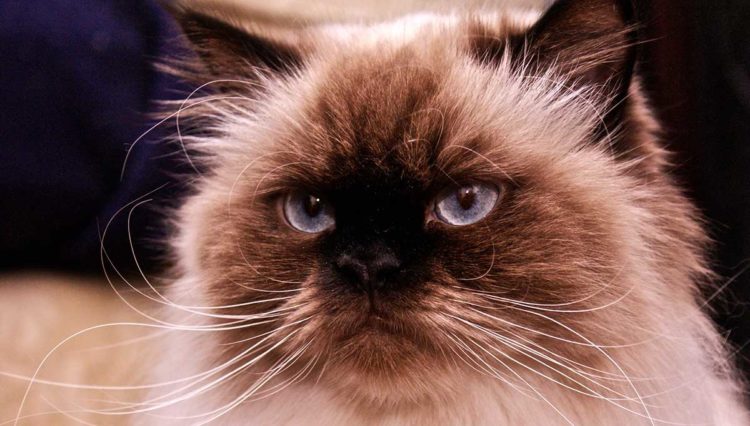
After World War II, further breeding of Himalayan cats continued in both the United States and the United Kingdom. Margaret Goforth, an American cat breeder, crossbred Persian and Siamese cats, eventually naming the new breed the Himalayan cat in 1957. Although these cats were not connected to the Asian mountain range, they resembled the thick white-haired fox and rabbit that lived in the Himalayans. The Cat Fanciers Association in both the US and UK recognized the breed that same year. However, in 1984, the CFA reclassified the breed as a sub color of the Persian cat. Despite this, in the US, the breed is still referred to as Himalayans, while in the UK and Europe, they are called Persians. The Himalayan cat competes in separate color categories of Persians in shows, and they are referred to as Himalayans by the American Association of Cat Enthusiasts and the Traditional Cat Association.
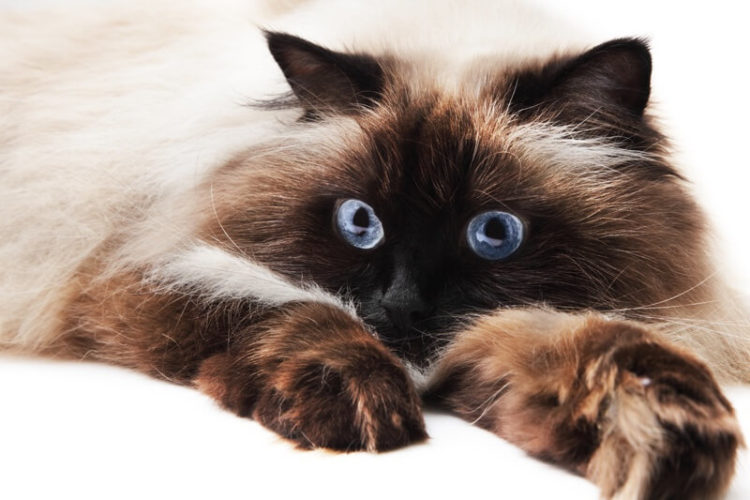
3. Nicknamed “Himmies” by owners and cat lovers, Himalayan cats have gone by various names including Persian-Siamese and Longhaired Colorpoints in the past. In Europe, they are now commonly known as the Himalayan Persian or Colorpoint Persian.
4. Despite their fluffy appearance, Himalayan cats are actually of medium size and have a strong build with big bones. On average, they weigh between 7 to 12 pounds with males being heavier. These cats have a round face, short and thick neck, and a well-rounded body. Their legs are short, and their tails are full, fluffy, and straight.
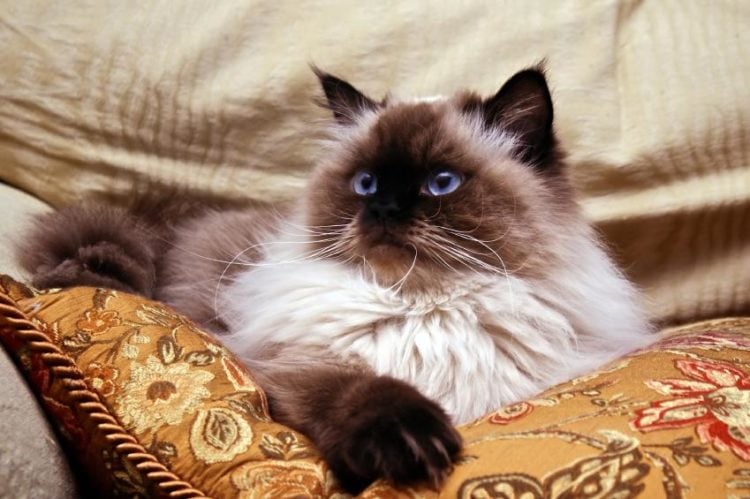
The Himalayan cat is renowned for its stunning pointed hair and distinctive face. The face of this breed is unique, with a flattened appearance similar to that of a pug dog. The head is rounded, adorned with captivating round blue eyes and pointed ears set far apart. The color of the face corresponds to that of the points, and a skin-colored nose, or “cobby,” completes the look. There are two classifications of the Himalayan cat’s face: Traditional and Exotic. The Traditional face, also known as “Doll Faced,” is rounded with a nose that is longer and lower in position. Meanwhile, the Extreme face, also referred to as “Flat Face” or “Peke Face,” is pushed in and flattened, resembling that of a Pug dog.
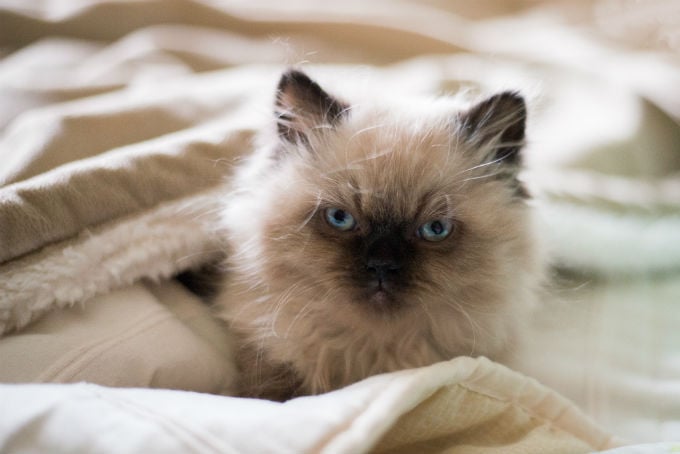
The Himalayan cat is known for its luxurious coat, which is the most distinctive feature of the breed. This cat was bred as a result of research on the Siamese color point gene. The end result is a beautiful cat with thick, silky long hair that is generally white or cream-colored like the Persian cat, and color points on the face, ears, paws, and tail just like the Siamese cat. Although Himalayan kittens are not born with color points, they appear as the cats mature, usually around the age of 2. Originally, there were only four color points for Himalayan cats: seal (black), chocolate, blue, and lilac. However, it was discovered through breeding and research that color points like chocolate and lilac were more challenging to present. Both parents of the kitten must have the color point gene. Today, there are 20 color points available for the Himalayan cat, including combinations. These cats have their silky tresses hanging from their body, with a ruff around their neck and frills between their ears, front legs, and toes. The fluffy and full tail of the Himalayan cat adds to its beauty.
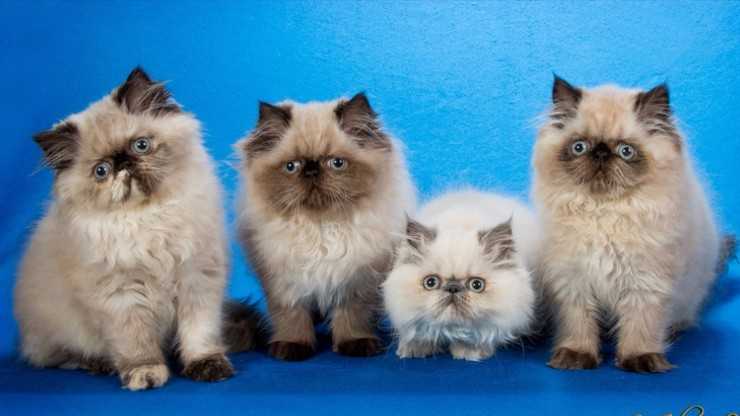
Let’s delve further into the topic of color points. Nowadays, Himalayan cats come in a variety of 20 different color points. Although the fur on their body remains white or cream-colored, the color points on their face, ears, paws, and tails can range from black to red. The color on their face is akin to a “mask” that covers the area above their eyes, stretches across their cheeks, and down their chin. Markings on their ears extend to the tips and inside, while their paw markings reach their pads. Today, Himalayan cats are available in various color points, including seal, chocolate, blue, lilac, fawn, red (flame), silver, Tortoiseshell, Tabby, Lynx, and more.
Studies have demonstrated that temperature and enzyme production can influence the cat’s color pointing, along with genetics. Melanin produces pigmentation in the skin and fur. In conjunction with body temperature and environmental temperature, pigmentation develops in the cooler areas of the body. This explains why the color points on Himalayan cats extend from their body to their ears, paws, and tails. Furthermore, scientific research has suggested that Himalayan cats residing in cooler regions will possess darker color points than those living in warmer climates.
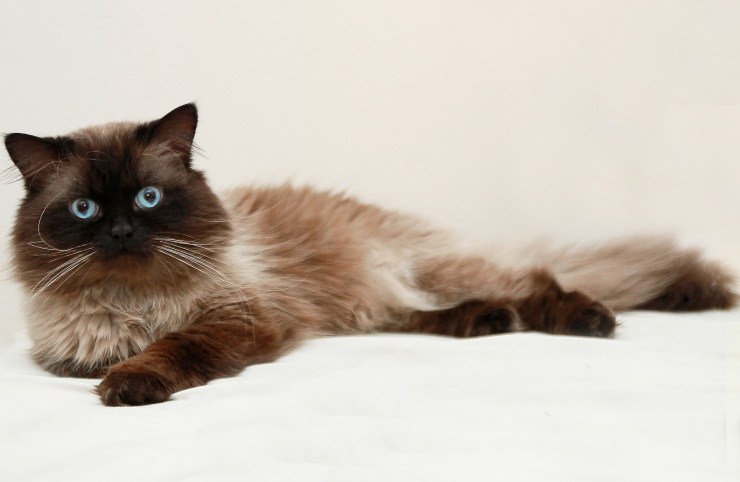
When it comes to the health of your Himalayan cat, there are a few things to keep in mind. Unfortunately, this breed is prone to carrying a gene that can lead to PKD or Polycystic Kidney Disease, which is also common in Persian cats. Early tests can be conducted to check if your Himalayan has this gene, and if so, it should not be bred but instead spayed or neutered. Additionally, Himalayans may also suffer from feline hyperesthesia syndrome, which is a nervous system disorder.
The flat face of your Himalayan could also impact its dental, eye, and breathing health. Regular visits to the vet and routine vaccinations are essential for your pet’s overall well-being. Providing your cat with a nutritious diet is crucial, along with access to clean water at all times. As a high-energy breed, Himalayans need plenty of exercise to burn calories. With proper healthcare, your Himalayan cat can live for an average of 8 to 15 years.
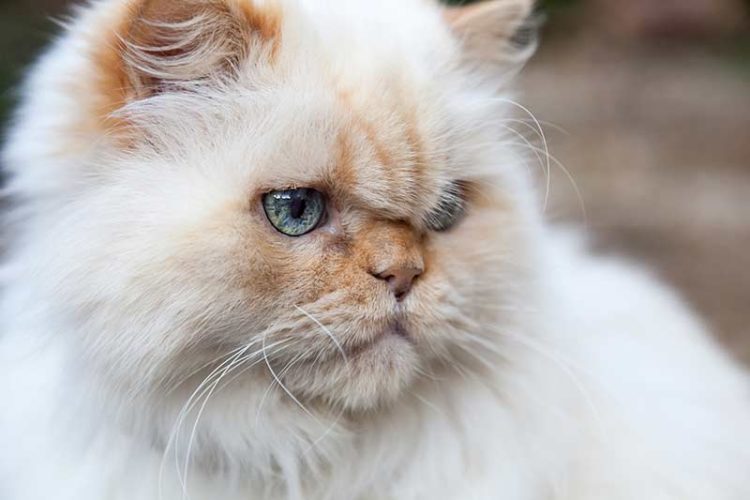
Caring for a Himalayan cat’s coat can be time-consuming, due to its double and long coat that requires daily brushing to prevent matting and keep skin and hair oils in check. Regular brushing also helps to limit shedding, which can be problematic for this breed. Luckily, the Himalayan cat enjoys being groomed and will happily lie on its owner’s lap while being brushed. In addition to daily brushing, a monthly bath is recommended to maintain the cat’s silky, shiny, and healthy coat. It’s important to note that despite grooming efforts, the Himalayan cat is not hypoallergenic and may not be suitable for individuals with allergies.
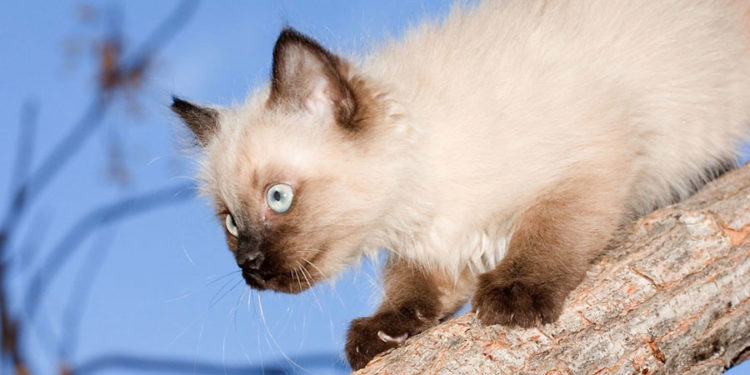
Caring for your Himalayan cat is important because of their flattened face which can lead to tear duct issues. It’s essential to wipe their face and eyes daily with a clean, damp cloth to avoid any potential buildup and clogging in the tear ducts that could cause health problems. Additionally, it’s crucial to ensure that your pet Himalayan cat receives a nutritious diet to obtain all necessary vitamins and minerals. Himalayans are typically inactive, so it’s important to prevent them from gaining weight. However, they do experience high-energy bursts and require proper calorie intake. Lastly, it’s important to always provide your Himalayan with fresh water.
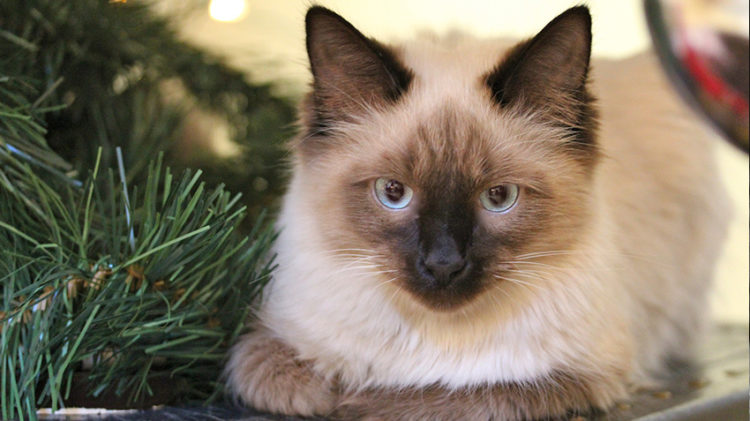
In terms of personality, the Himalayan cat takes after both its ancestors, the Persian and Siamese breeds. Like the Persian, these cats are gentle and relaxed, often preferring to bask in the sun or lounge on furniture. However, they also inherit the social tendencies of the Siamese breed, enjoying the company of their family members and participating in various activities with them. Himalayan cats tend to be excellent with children, other cats, and even dogs, given early socialization. While they are friendly to visitors, they do form strong bonds with their primary owner and are known for being highly affectionate and loyal. Overall, the Himalayan makes an ideal companion and family pet.
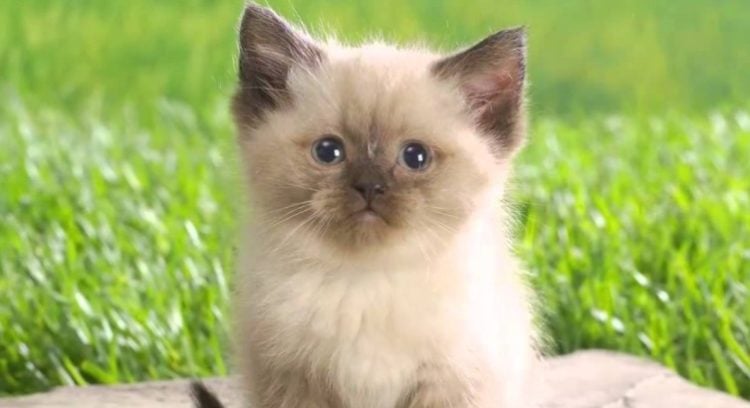
The Himalayan cat has become a popular figure in various forms of entertainment. One of the most notable appearances was in the 1990s “Homeward Bound” films, where the character of Sassy, a sarcastic and witty feline, was voiced by Sally Field. Sassy joined forces with two dogs, Shadow and Chance, as they embarked on an adventure across America to reunite with their human family. In the “Meet the Parents” trilogy, the character of Mr. Jinx, a peke-faced seal-colored Himalayan, was intelligent enough to even flush the toilet. Ben Stiller’s character Gaylord Focker tried to cover up Mr. Jinx’s disappearance by painting another Himalayan’s tail black. The Himalayan cat has also made appearances in other films such as “Date Night” and in television shows like “Heathcliff” and “iCarly”. Additionally, the ginger-colored Himalayan named Crookshanks appeared in the “Harry Potter” series, portraying an intelligent yet grumpy character. Furthermore, the Himalayan cat has been featured in several Japanese and Korean Anime stories.
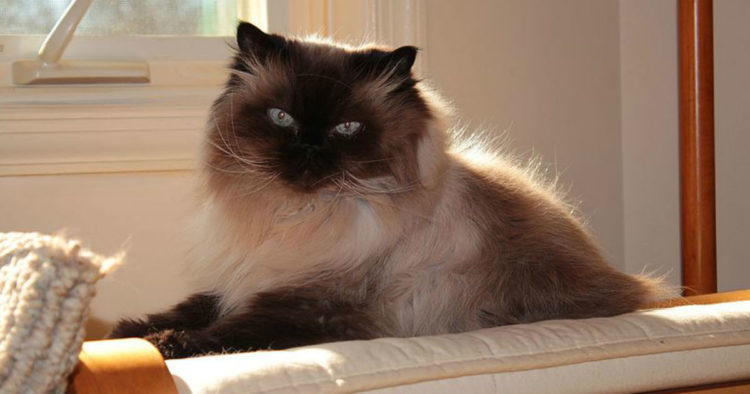
13. Popular Owners
Famous personalities have been known to take pride in their ownership of Himalayan pet cats. For instance, Martha Stewart is the proud owner of three Himalayans named Beethoven, Mozart, and Bartók, whom she has showcased on her television show “Martha Stewart Living”, in her magazine, and in advertisements for her K-Mart product line. It’s worth mentioning that Stewart has owned a total of 7 Himalayan cats. The star of “Flipping Out”, Jeff Lewis, also owns Himalayans named Monkey and Stewie, who have made appearances on his home improvement television show.
14. Entertaining Companions
The Himalayan cat, like its Siamese counterpart, can be quite enjoyable to be around. They are intelligent and love learning new tricks. With occasional bursts of high energy, Himalayans love to play with toys, including cat toys and plush toys, but they can also find joy in something as simple as a ball of crumpled paper. Just like Siamese cats, Himalayans can be taught to fetch. After lounging around for a while, they may suddenly exhibit bouts of energy, dashing across the room or rolling around on the floor. Overall, Himalayans make playful, entertaining companions for those who choose to share their lives with them.
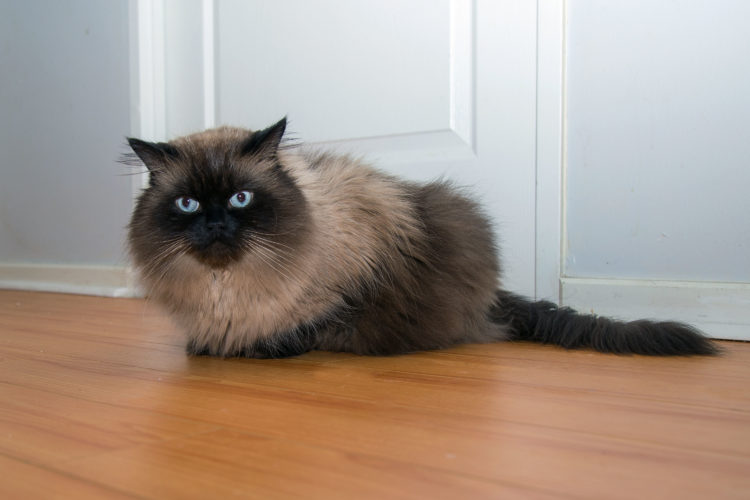
Two Himalayan cats have made it to the record books for their unique traits. Colonel Meow gained recognition in the 2012 Guiness Book of World Records for having the longest hair among all cats, with a length of nine inches. Despite his grumpy-looking face, he became an internet sensation in 2012. Sadly, he passed away two years later due to a heart condition. On the other hand, Tinker Toy, a blue point Himalayan, was recorded as the smallest cat in the world when he reached the age of maturity at 2 1/2 years old. Born on December 25, 1990, he measured only 2.75 inches tall and 7.5 inches long. Owned by Scott and Katrina Forbes from Taylorsville, Illinois, Tinker Toy lived for six years. Meanwhile, Lux, a Himalayan family pet from Portland, Oregon, weighs 22 pounds.
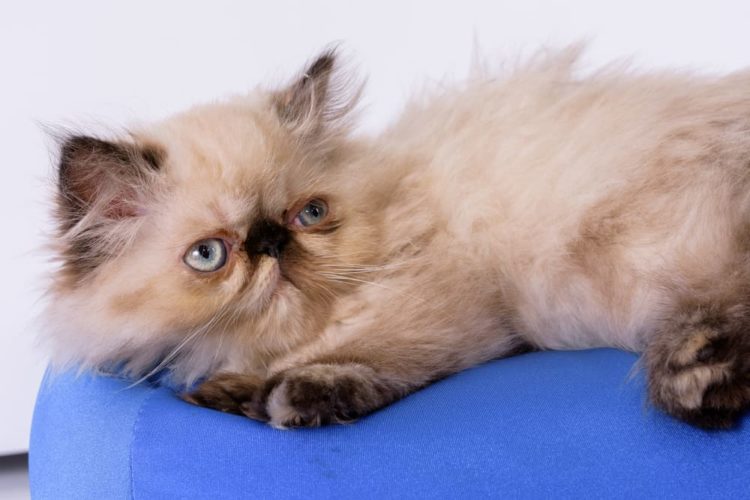
The Himalayan cat has sustained its popularity over time. It was already highly sought after when it was first introduced and it remains a beloved breed up to this day. Its charm has captured the hearts of many pet owners, making it the second most popular breed registered by the Cat Fanciers Association. Among the Persian color varieties, it reigns supreme as the most popular one. Despite being primarily kept as a companion animal, Himalayan cats are also showcased in competitions worldwide. In fact, they are the most easily recognizable feline participants in cat shows. There are numerous Himalayan cat clubs in various parts of the world, including the United States.
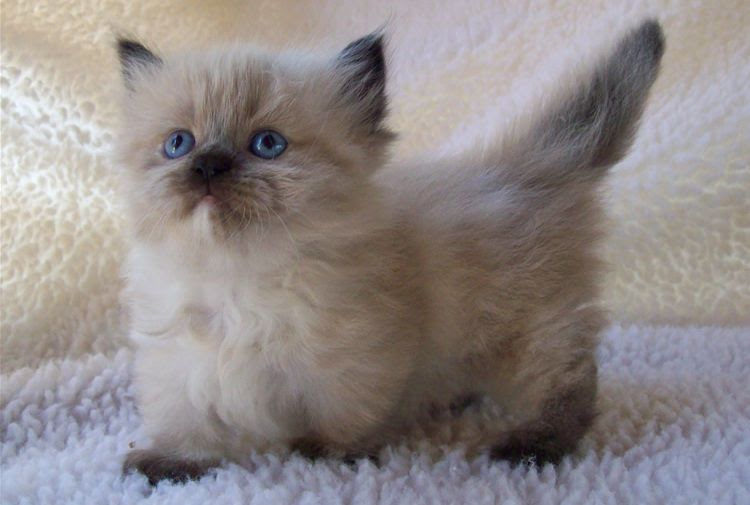
Content Revised:
17. They’re Not Jumpers
Himalayan cats are known for their calm demeanor and non-destructive behavior, which is one of their biggest advantages. Unlike other cat breeds, these cats do not climb or jump much, thanks to their short legs. As a result, they are less likely to jump on kitchen counters or damage curtains. Although Himalayan cats shed, they make up for it by being gentle and calm, not causing chaos in the household. You won’t catch them swinging from drapes or jumping on shelves or countertops.
18. Ideal Indoor Companions
Many people hesitate to own cats because they fear keeping them indoors might be challenging. However, the Himalayan cat is an excellent indoor companion. These cats have little to no interest in venturing outside and would rather relax in the comfort of their home. In addition, they are social creatures that enjoy spending time with their human families and being part of the fun. So if you’re looking for a cat that’s perfect for indoor living, the Himalayan cat is the one for you.
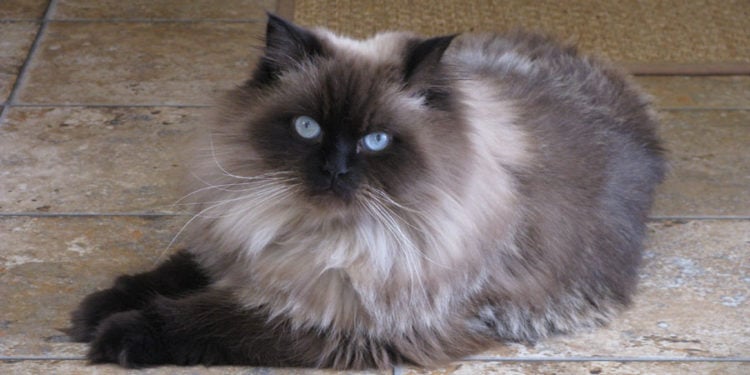
When searching for a Himalayan cat to bring into your family, it’s important to find a reputable breeder. The breeder should be registered with a cat fancier association such as the CFA, TICA, or FIFe. This ensures that the breeder follows ethical guidelines and has good bloodlines. Take the time to visit local breeders and fully research breeders found online. A well-bred Himalayan cat can cost anywhere from $500 to $1500.
Himalayan cats make wonderful pets and their owners will attest to this. They are not only stunningly beautiful with exotic features, but also highly intelligent, affectionate, loyal, and entertaining. The only potential downside to owning a Himalayan cat is the grooming. With their long, luxurious double coat of hair, daily grooming is necessary. However, the joy and companionship that a Himalayan cat brings to your life is well worth the effort.

